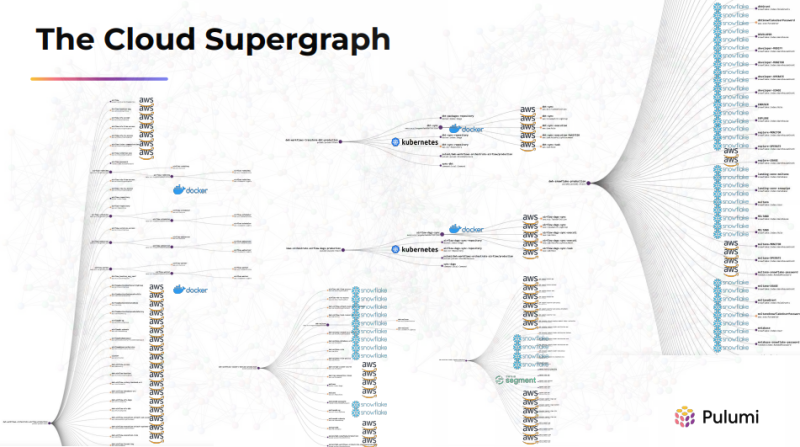Pulumi is bringing artificial intelligence (AI) innovation to cloud infrastructure, via a solution it calls Pulumi Insights, which uses something called a “cloud supergraph” which could save companies a pretty penny by helping them control multi-cloud usage patterns, according to Pulumi co-founder Eric Rudder in an interview with Silverlinings.
Founded in 2017 with a $5 million series seed, Pulumi was created to provide solutions that let engineers deliver infrastructure as code (IaC) faster.
The Pulumi Insights solution features three pillars of functionality — search, analytics, and intelligence — and supports any IaC across more than 100 clouds, whether provisioned by Pulumi, Terraform, CloudFormation or others.
What is a cloud supergraph?
Most people use multiple clouds, and with multiple clouds, comes a much-needed cloud integration, according to Rudder. “The problem is when you bring these things together, you actually can’t find the information you’re looking for.”
Want to learn more about cloud data center strategies? Register for our Cloud Data Center Strategies virtual summit today.
That’s where Pulumi’s cloud supergraph comes in— it takes all of an organization’s cloud information and puts it into one data structure. This supergraph is a multi-cloud resource search that can “find a needle in the haystack — on any single cloud or multi-cloud,” according to Rudder. Plus, it supports structured and natural language queries.

Why is this important? Even if you don’t know how to program, Pulumi Insight has the ability to turn a user’s English sentence into code using generative AI to make it possible for non-programmers to filter, sort, customize, facet and quickly slice and dice data, said Rudder.
Pulumi’s cloud supergraph’s observability also provides deep insight into when, what, and how much of a cloud resource is actually being used — which down the line can influence a company’s spending activity, he added.
“You can say things like, hey, what databases are sitting out there that no one's connected to in the four months that I'm paying for, and how much is that costing me?” Rudder pointed out.
“The better educated you are as an infrastructure developer, knowing where your cloud spend is going, the better deals you can negotiate,” Rudder added. “The ability to query is unique. You’ll know not just your consumption, but you’ll have a breakdown by resource type. [Pulumi Insights] will be incredibly far reaching, so you know how much you pay for these things and you know what your resources are.”
Pulumi’s supergraph is an innovative asset for bringing AI to infrastructure as code, by allowing engineers “new superpowers” to boost productivity, he said. Other features of Pulumi Insights include a PulumiGPT, the ability to modify infrastructure, and the ability to export analytics to data warehouses.
“More and more people will apply AI technology to more and more solutions, but we’re the first to do it at scale and as infrastructure as code,” Rudder added.
Want to learn more about data strategies for the cloud? Register for our Cloud Data Center Strategies virtual event here.
